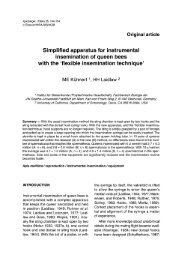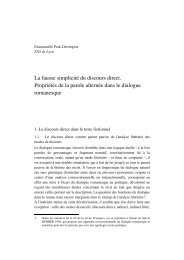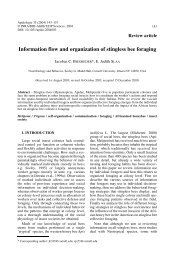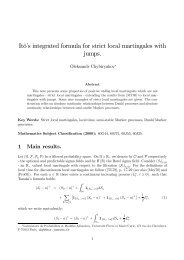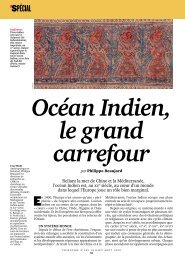ARBEITSGEMEINSCHAFT DER INSTITUTE FÜR ... - HAL - INRIA
ARBEITSGEMEINSCHAFT DER INSTITUTE FÜR ... - HAL - INRIA
ARBEITSGEMEINSCHAFT DER INSTITUTE FÜR ... - HAL - INRIA
Create successful ePaper yourself
Turn your PDF publications into a flip-book with our unique Google optimized e-Paper software.
SUMMARY<br />
Trophallaxis of worker honey bees in smafl groups and colonies<br />
Colonies of eusocial insects are often characterized by dominance hierarchies.<br />
In colonies of the honey bee (Apis mellifera L.) the dominant individual is the<br />
queen whereas the workers are thought to be a subordinate caste (W ILSO rr,<br />
1975).<br />
KoRST &<br />
VELTHU IS (1982), however, have shown that dominance hierarchies<br />
among workers (A.m. capensis ESCH.) exist under queenless conditions.<br />
Dominant workers develop their ovaries faster, produce more eggs, and more<br />
9-Oxo-2-decenoic acid, the main component of the queen substance. Therefore<br />
these dominant bees have a greater genetic fitness than subordinates (MORITZ &<br />
HILLESHEIM , 1985). These characters are correlated with trophallactic behaviour<br />
in laboratory experiments, i.e. subordinate workers in a small group (3 standard<br />
bees and 1 test bee of the same age - 2 days old) offer food to the standard bees<br />
while dominant workers are fed.<br />
Here we studied whether the feeding hierarchy under laboratory conditions<br />
reflects a general trophallactic behaviour which can also be found in colonies.<br />
Trophallaxis of workers of 7 different lines was tested in small groups in the<br />
laboratory test. The ratio of dominant feeding acts to the total of observed feeding<br />
acts of the test bee was determined and the degree of dominance was evaluated<br />
according to MORIT Z & Htt,LesHEtM (1985). Workers of the same lines were then<br />
tested in one queenright observation hive. In contrast to the tests in small groups,<br />
test bees were exposed to the socially complex and environmentally more heterogeneous<br />
conditions in the colony. Nevertheless the genotypic correlation between<br />
the trophallactic behaviour in the small group and in the hive resulted in r 0.82<br />
=<br />
(p 0.05).<br />
=<br />
It could be shown that besides the age effect (FREE, 1957), there were also<br />
genetic factors determining trophallactic behaviour of worker bees in queenright<br />
colonies. Genetic variance might be an additional factor regulating division of<br />
labour in honey bee colonies in general.<br />
Acknowledgerrrent : Financial support was given by the Deutsche Forschungsgemeinsch.tf:<br />
(grant KO 400/6-1).




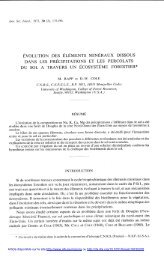
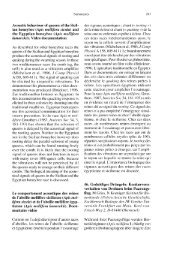
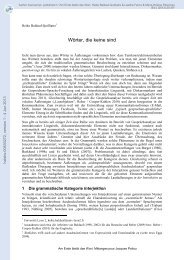
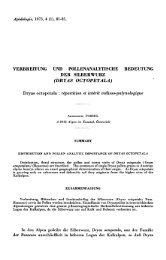
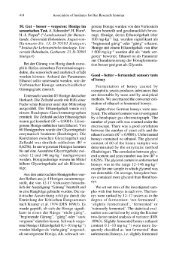
![4 C]-Polyethylenglykol bestimmt, der - HAL - INRIA](https://img.yumpu.com/22454280/1/177x260/4-c-polyethylenglykol-bestimmt-der-hal-inria.jpg?quality=85)
